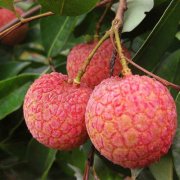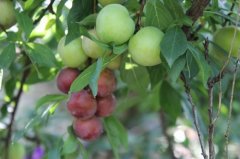How about Tainan No. 1, a new variety of edamame beans in Taiwan? Advantages of Taitai Nan Xuan No.1 in Golden Taro
Do you know the new variety of edamame bean, Dai Nan Xuan No.1? This variety of soybean is different from other soybeans, and it is also different from lentil planting. Let's take a look at it.
Maodou Tainan Xuan No. 1 was bred by Tainan Agricultural improvement Farm and Asian vegetable Research and Development Center. The new variety has a beautiful quality and taro flavor. Not only fresh pods and plant leaves will also send out a taro fragrance, smell the fragrance, taste sweet and delicious, fresh bean kernel contains rich nutrition, processed frozen edamame bean products, domestic and foreign scholars and experts taste as the best choice. This variety has been approved by the naming Review Committee of the Council of Agriculture, and the trade name "Golden Taro" is the first tea bean variety approved to be registered and promoted in China.
Taro Dou Tainan Xuan No. 1 was bred by pure line breeding method. 182 individual plants were selected according to different plant types in the spring of 1996, which were planted in the field of 30 ha tea bean varieties of Xinshi bean farmers. In the autumn of 1996, they were sown in the way of picking plants and rows. 35 systems with good fruiting characters, high yield of qualified pods and consistent maturity were selected during the growth period, and the green pods were harvested. In the second row experiment of spring cropping in 1997, nine systems with high yield of qualified pods were set up in Tainan. In the autumn of 1997, the system of breeding and evaluation of NO.46 was selected and numbered as TS85-21V (Tainan Xuan No. 1). It participated in the strain test in 1998, regional trials and a series of cultivation experiments in 1999 and 2000, and entrusted Lin Shunfu, a teacher from the Department of Agronomy of National Taiwan University, to carry out DNA fingerprint analysis in 2003. Tainan Xuan 1 and the excellent plants selected from farmland in other new cities belong to the same ethnic group, with a similarity of 80%, while Tainan Xuan 1 has a difference of about 3032% from the existing tea beans preserved in Taiwan.
The advantages of a new variety
First, the taste is good: the 2000 Sino-Japanese Frozen edamame Trade Symposium was sponsored by the Taiwan District vegetable and Fruit Frozen Industry Trade Union. According to the evaluation results of 34 people at home and abroad, the flavor of Maodou Tainan Xuan No. 1 was widely praised. It shows the special flavor-taro flavor of Maodou Tainan Xuan No. 1, and is loved by all.
2. The yield of qualified pods is higher than that of existing cultivated tea bean varieties: Maodou Tainan Xuan 1 is planted with general edamame bean cultivation density 50 cm × 15 cm × 2 plants, and the qualified pod yield is slightly lower than that of Kaohsiung Xuan 1 and Kaohsiung 5, but higher than that of existing tea bean varieties (Xiangji, Japanese Weitaro, etc.). If you increase the cultivation density of Maodou Tainan Xuan 1 to 50 cm * 10 cm * 2 plants The increase in yield is no less than that of the existing cultivated variety Kaohsiung 5.
Third, resistance to diseases and insect pests: Maodou Tainan Xuan No. 1 has no inoculation of pathogens and no pesticide control, the incidence of exposure fungal disease and powdery mildew is less than 1%, and the disease tolerance is strong.
Fourth, the contents of sugars and isoflavones are high: according to the analysis of quality components in the average two-year regional test, autumn soya bean Tainan Xuan 1 contains 13.7% sugar and spring crop 13.5%, both of which are higher than the control variety Kaohsiung Xuan 1. The total grain isoflavone content of Maodou Tainan Xuan 1 was 548.9 μ g / g, which was 52.7% higher than that of the control variety Kaohsiung 5, and had better health food value.

- Prev

Introduction of common diseases and control methods of litchi trees, and effects of litchi diseases on litchi trees
Do you grow lychees? If you have planting, you must pay attention to the diseases and insect pests of litchi. Let's take a look at the common diseases of litchi. 1. Blight blight is caused by Peronophythora litchi, which can harm flower organs, leaves, tender stems and
- Next

The main cultivated varieties of plums and their characteristics? Introduction of Salian Plum / Red Meat Plum / Yellow Meat Plum and other varieties
Do you like plums? Do you know what kinds of plums are on the market now? What is the fruit setting rate of plums? Let's have a look! The main cultivated varieties and their characteristics: also known as Shanlian plum, the tree is about 25 meters tall and has narrow leaves.
Related
- The first cup of black tea in spring, the flavor and history of tea gardens in Kenya, Africa
- The computer can not only choose potatoes, but also grow tea rice. AI will grow winter oolong tea champion.
- It is not only the inflated tea bitten by insects, but also engraved with the four seasons tea in Beipu.
- The Oriental Beauty Tea Festival in Zhuxian County takes the stage at the weekend to experience the plus-size feast of oil tea.
- & quot; Oriental Beauty Tea & Exploration of Emei in Hsinchu, the hometown of quot;
- The new variety of strawberry "Tainong 1" dessert is the first choice with mellow aroma. Crimson gorgeous
- History of Tea in Taiwan: from Wild Inner Mountain to Export Tea Garden
- Two types of Taiwan Oriental Beauty Black Tea won the British three-Star Award for Childhood Tea Xiang Zhang Jiaqi changed from pilot to champion tea maker.
- Banana species and varieties: the planting history of Taiwan Xianren banana and dwarf banana is long, is banana disease resistant?
- Coffee planting Technology: Qianjie Coffee from Seedling to harvesting

